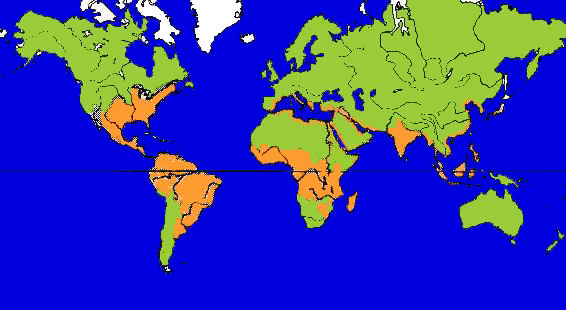What a killi ?
Killifhishes in brief
The term "killi" comes from the old Dutch "kil", meaning small stream. It would have been assigned by the settlers arriving in North America, watching the fish in these rivers.
This word was subsequently generalized and extended to all toothcarp oviparous (Cyprinodontes ovipares).
Currently, there are over 800 species of killifishes, belonging to several gender as Aphyosemion, Fundulopanchax, Notobranchius, Rivulus and others. Considered part of the finest specimens of freshwater, killifishes fascinated also by their amazing adaptability to the environment. Note particularly the building:
- to move from one place to another, skipping;
- to stay out of water for many minutes or hours;
- to accommodate the lack of food for several days;
- but above all, a non-standard mode of reproduction. While some species do not know the drying of the stream where they are, others live in temporary ponds. At the beginning of the dry season, ponds are disappearing, the eggs are buried in the ground, and resist until the next rainy season, after many months!
Killifishes in the world
Killifishes are present on all continents. All? Not really. A country still holds to these marvels of Australia. As you can see on the map below, these small fish are mainly distributed in tropical and temperate regions of the planet. However, it is possible to find in Europe, particularly in the south of France (Corsica), and Spain.
Maintenance killifishes
Killishes for the most part are not very demanding on their conditions for maintenance. They accommodate a volume of 15 to 30 liters, filtered weakly, with subdued lighting and temperatures ranging from 22 to 28 ° C. The ambient temperature of a room should be easily settled (20/22 ° C)
A golden rule is the rule: Cover the pan! Being very good jumper, they will find without any difficulty uncovered cm ².
So you have all the ingredients for the killifishes quickly invade your living rooms!



